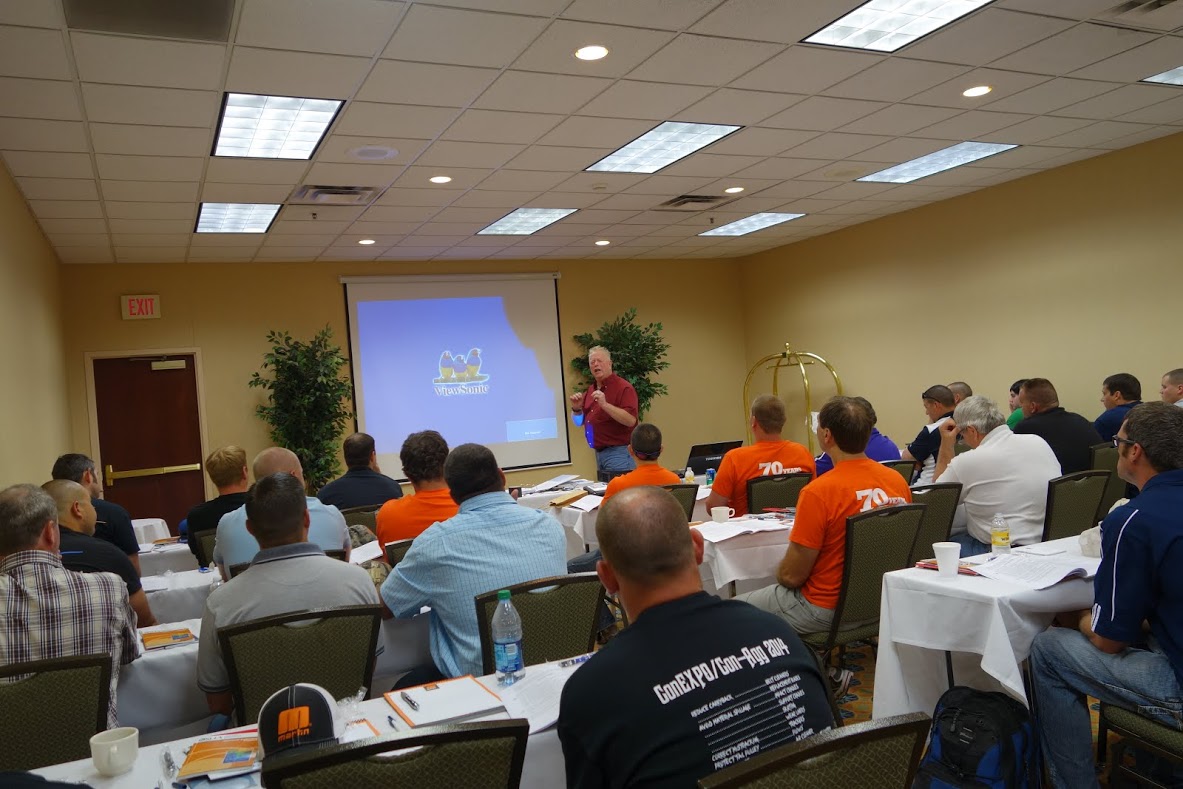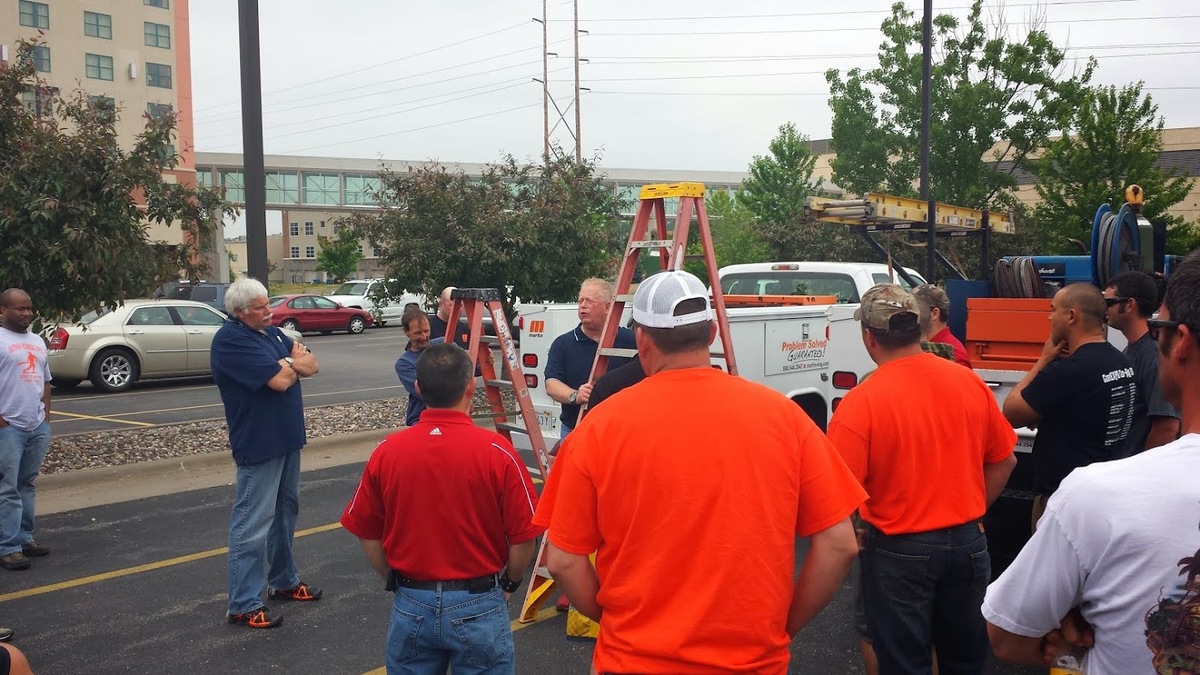Higher Training Standards Reduce Customer Liability
Published: June 25th 2014

“Every one of our customers has a different standard of safety,” said Ron Palinkas, Martin National Service Manager, who arranged the training. “We strive to exceed the industry standards and our customers’ standards, too. The Life Safety program is part of that by introducing staff to a risk management mindset that encompasses not only work, but home and personal life, as well. At the core, it’s about consistently using common sense in every situation.”
Whenever Martin hires employees who need an OSHA and MSHA certification in order to do their job, they are sent to St. Louis to learn from Dr. Thomas Davidson, CEO of the CSI (Complete Safety Institute), who also teaches the Life Safety program. This year, Dr. Davidson was invited to our headquarters to join other trainers to conduct the certifications and training as a group.
Walk the Belt™
Technicians are refreshed annually on the procedure called Walk the Belt™, a program unique to Martin and part of our commitment to safety for employees and customers. It involves a full inspection of the conveyer system, including the idlers, cleaners, chutes and other components, to determine their status and effect on belt condition. The technician uses an Android tablet to report information such as speed, length, width, load weight and volume, and then takes photos to record equipment wear over time. However, the procedure goes beyond merely observing the equipment. As an example, a technician on a routine service call at a U.S. manufacturer recently walked the customer’s belt and recognized a mechanical splice that was starting to fail. A sudden break could grind production to a halt, causing product loss and posing a serious threat to worker safety. Even though Martin doesn’t service belts, the technician arranged a convenient time for the conveyer system to be shut down so the belt could be fixed by the manufacturer’s service partner. This saved the customer money, time and potentially a huge liability.
As an example, a technician on a routine service call at a U.S. manufacturer recently walked the customer’s belt and recognized a mechanical splice that was starting to fail. A sudden break could grind production to a halt, causing product loss and posing a serious threat to worker safety. Even though Martin doesn’t service belts, the technician arranged a convenient time for the conveyer system to be shut down so the belt could be fixed by the manufacturer’s service partner. This saved the customer money, time and potentially a huge liability.
OSHA and Fall Prevention
The Occupational Safety and Health Administration develops strict standards and provides the content for certifications. This year, trainers focused on the number one cause of injury at industrial workplaces: falling. Many of Martin's technicians work on tall silos, towers and mine shafts. This training addressed the proper use of harnesses and ladders, as well as the performance of a range of tasks that could result in the employee falling or falling debris.
MSHA and Confined Space Entry
The certification standards for the Mining Safety and Health Administration are widely considered stricter than those of OSHA. The trainers at this year’s event emphasized safety relating to confined space entry, a potentially dangerous activity in which Martin field technicians engage regularly. It can be so hazardous, in fact, that it involves a PRCS (permit required confined space) team of three technicians to safely execute.
The PRCS team is comprised of an “entrant,” the technician who enters the space either for cleaning and/or service, the “attendant,” who assists the entrant inside the space and monitors air quality, and a “supervisor,” who remains outside to troubleshoot, in case any problems arise.
Tools, Trucks and Everything In-between
During this session, our trainers went as far as addressing the contents of a service truck’s toolbox for proper use of equipment in customer facilities and even reminded the staff of safe driving procedures on and off the worksite. Trainers stressed cleanliness in all procedures to avoid injury, blood borne pathogens and contamination from one conveyer system to another.
Making Safety a Priority
By staying ahead of mechanical failures and training employees to mitigate risk, Martin reduces liability for customers, while at the same time enhancing service. Safety remains a cornerstone of our business philosophy, and from our intensive employee training to our Safety First™ Products and Solutions, we strive to have the industry’s most knowledgeable technicians and fewest safety incidents.